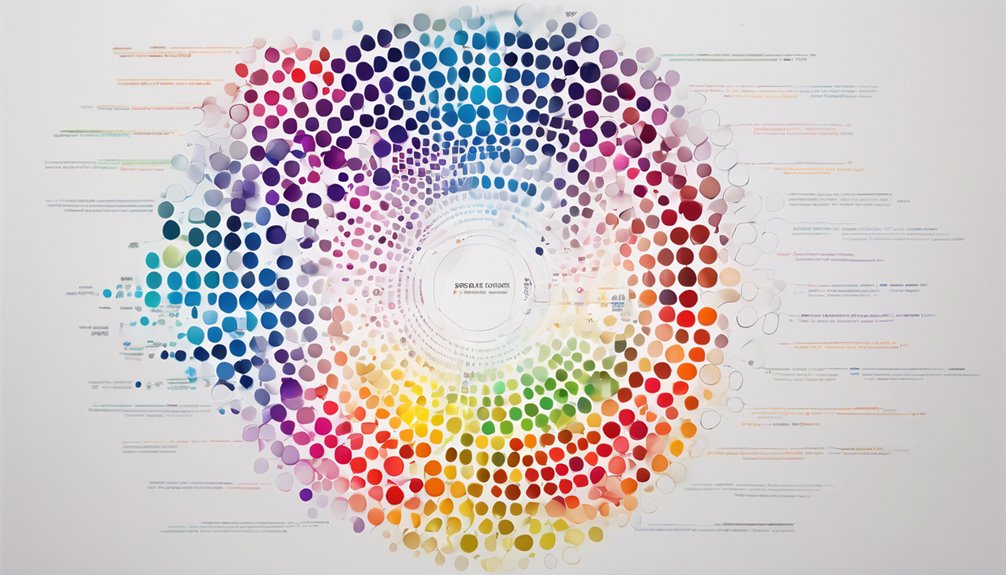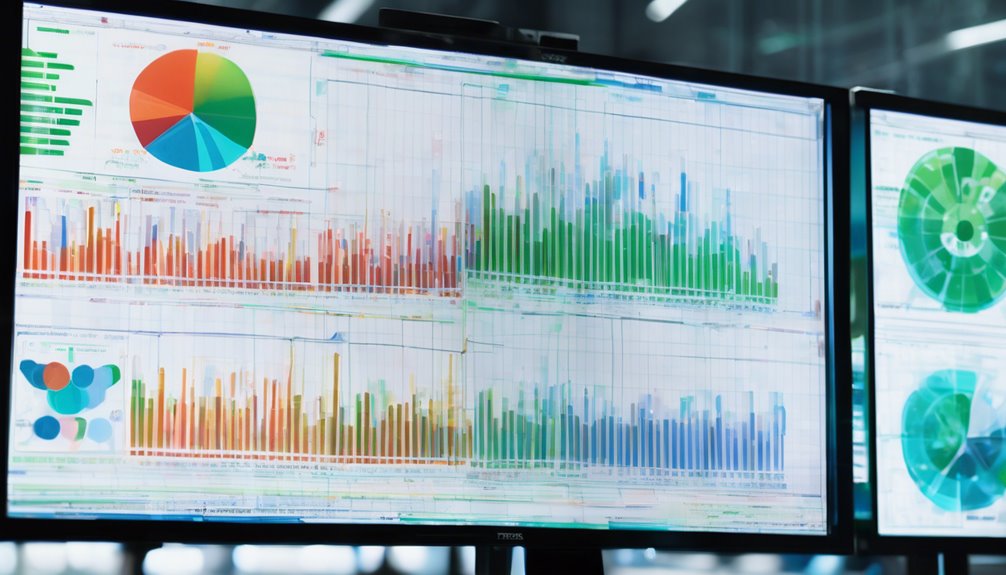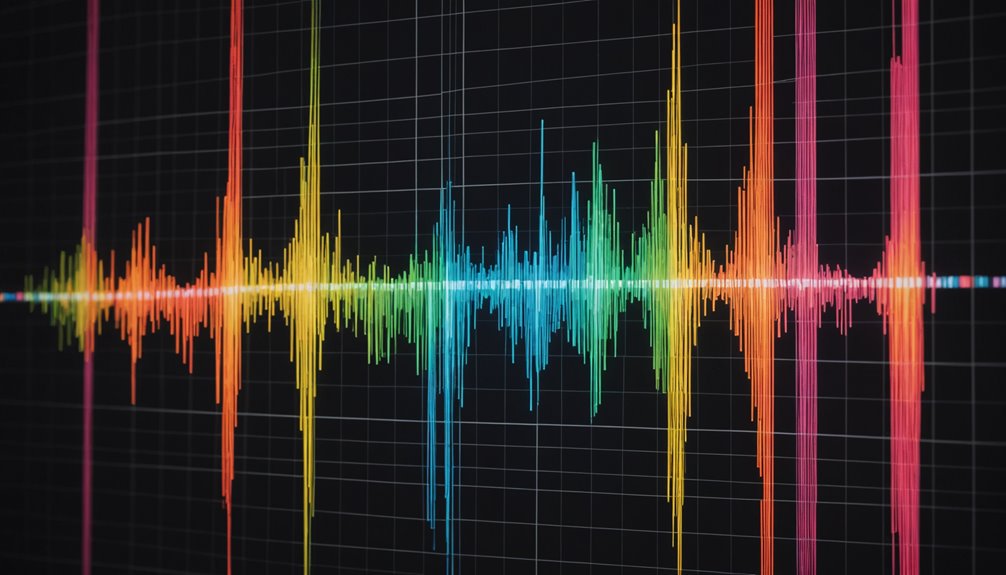When it comes to monitoring quality, a P-chart can be an invaluable asset. It helps you visualize the proportion of defects in your processes over time, providing insights that can lead to significant improvements. As you explore the components and applications of P-charts, you'll discover how they can transform your quality control efforts. But what about their limitations and comparisons with other tools? Let's uncover those aspects next.
What Is a P-Chart?

A P-chart, or proportion chart, is a valuable tool in quality control that helps you monitor the percentage of defective items in a process over time.
It visually represents the data, allowing you to see trends and variations easily. You plot the proportion of defects for each sample on the chart, making it easier to identify when your process is in control or when it requires attention.
Each point on your chart corresponds to a specific sample, and you can establish control limits to determine acceptable quality levels.
By regularly updating the P-chart, you gain insights into your process's performance, enabling you to make informed decisions about necessary improvements.
This straightforward tool is essential for maintaining high-quality standards.
Importance of P-Charts in Quality Control
Understanding the importance of P-charts in quality control is crucial for maintaining optimal production standards.
These charts help you monitor the proportion of defective items in your processes, allowing you to quickly identify trends or variations. When you use P-charts, you gain insights into your production's stability, making it easier to take corrective actions when necessary.
This proactive approach minimizes waste and enhances customer satisfaction by ensuring consistent product quality. By tracking performance over time, you can make data-driven decisions that lead to continuous improvement.
Ultimately, P-charts empower you to uphold high standards in your operations, helping you achieve your quality control goals and maintain a competitive edge in the market.
Components of a P-Chart

P-charts consist of several key components that work together to provide a clear picture of process performance.
The first component is the data points, which represent the proportion of defective items in each sample. You'll also find the center line, indicating the average proportion of defects over time.
Control limits are crucial; they define the boundaries for acceptable variation in the process. Additionally, you'll need sample size, as it influences the chart's sensitivity.
Finally, pay attention to the time intervals, which help track performance trends. By understanding these components, you can effectively analyze your process and make informed decisions to improve quality.
Each element plays a vital role in ensuring the chart accurately reflects your process's stability and capability.
How to Create a P-Chart
Creating a P-chart involves a structured approach to visualize the proportion of defects in your process. First, gather your data, including the number of defective items and the total items inspected over a specific period.
Next, calculate the proportion of defects for each subgroup by dividing the number of defects by the total inspected. Then, determine the average proportion of defects across all subgroups.
You'll also need to calculate the control limits, typically using a formula based on the average proportion and sample size. After that, plot your data points on the chart, marking the average and control limits.
Finally, review your P-chart regularly to monitor process performance and identify any trends or variations.
Interpreting P-Chart Results

When you dive into interpreting P-chart results, it's crucial to look beyond the surface numbers to uncover insights about your process.
Start by identifying any trends or patterns. Are there periods where the proportion of defects spikes? This might indicate an issue that needs your attention.
Next, pay close attention to the control limits. If your data points fall outside these limits, it signals a potential problem in your process that requires investigation.
Don't forget to consider the sample size; small samples can lead to misleading results.
Finally, think about the context of your data. Understanding external factors can help you make informed decisions and improve your overall process efficiency.
Keep these points in mind to maximize your P-chart's effectiveness.
Common Applications of P-Charts
Quality control relies heavily on P-charts for monitoring processes where the proportion of defective items is crucial.
You can apply P-charts in various industries, such as manufacturing, healthcare, and service sectors. For instance, in manufacturing, you might track defective products during production runs to ensure quality standards.
In healthcare, P-charts can help monitor the rate of patient infections or medication errors, allowing for timely interventions.
In service industries, you can use P-charts to measure customer complaints or service failures, helping to improve customer satisfaction.
Limitations of P-Charts

Although P-charts are valuable tools for monitoring process quality, they do have limitations that can affect their effectiveness. One major limitation is that they require a sufficient sample size to provide reliable insights. If your sample size is too small, the results may be misleading.
Additionally, P-charts are best suited for processes with constant opportunity for defects; they struggle with variable sample sizes or changing processes. They also don't identify the root causes of defects, which means you'll need to conduct further analysis to improve your processes.
Lastly, P-charts assume that the underlying process follows a binomial distribution, which may not always hold true. Recognizing these limitations helps you make more informed decisions in quality control.
Comparing P-Charts With Other Control Charts
While P-charts are effective for monitoring proportions of defects in processes, they aren't the only type of control chart available, and understanding their differences with others can enhance your quality management strategies.
For instance, C-charts are used to monitor the count of defects in a constant sample size, while NP-charts track the number of defective items in a fixed sample. If you're dealing with continuous data, X-bar charts are more suitable, focusing on averages over time.
Each chart serves a unique purpose, so selecting the right one depends on the specific characteristics of your data. By comparing P-charts with these alternatives, you can make informed decisions that ultimately improve your process control and quality outcomes.
Real-World Examples of P-Charts in Action

P-charts are powerful tools used across various industries to monitor and maintain process performance.
In manufacturing, for instance, you can track defect rates in products, allowing you to identify and address quality issues quickly.
In healthcare, hospitals use P-charts to monitor patient infection rates, ensuring timely interventions when spikes occur.
In the food industry, restaurants may utilize P-charts to track customer complaints, helping them improve service quality.
Retailers can also apply P-charts to measure the percentage of items returned, guiding inventory and sales strategies.
By observing trends over time, you can make informed decisions that enhance operational efficiency and quality. This aligns with the Six Sigma principle of continuous improvement, which emphasizes ongoing evaluation and optimization of processes.
These real-world applications illustrate how P-charts can drive continuous improvement in diverse settings.
Best Practices for Using P-Charts
To make the most of P-charts, it's important to follow best practices that enhance their effectiveness. First, clearly define your process and what you're measuring. This ensures accurate data collection.
Next, choose an appropriate sample size; larger samples provide more reliable results. Regularly update your control limits to reflect any changes in the process. Always plot your data consistently, and look for patterns or trends that may indicate issues.
Don't forget to involve team members in analyzing the chart; their insights can be invaluable. Finally, use P-charts as part of a broader quality improvement strategy, linking them to actionable steps for ongoing enhancements.
Conclusion
In summary, P-charts are essential tools for monitoring quality and identifying trends in defect rates. By understanding their components and how to interpret results, you can effectively use them to enhance your processes. While they have limitations, the benefits of improved decision-making and waste reduction make them invaluable in quality control. By following best practices, you'll maximize their effectiveness and drive continuous improvement in your operations, ultimately leading to greater customer satisfaction.

